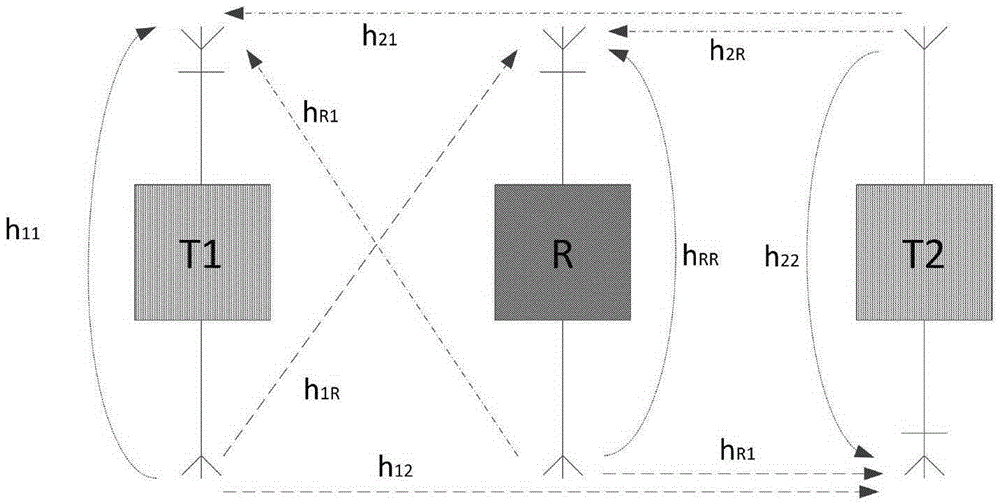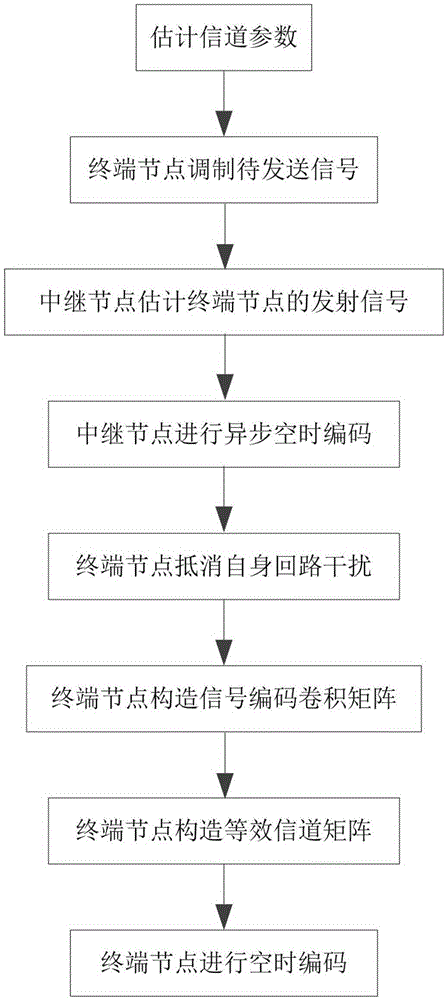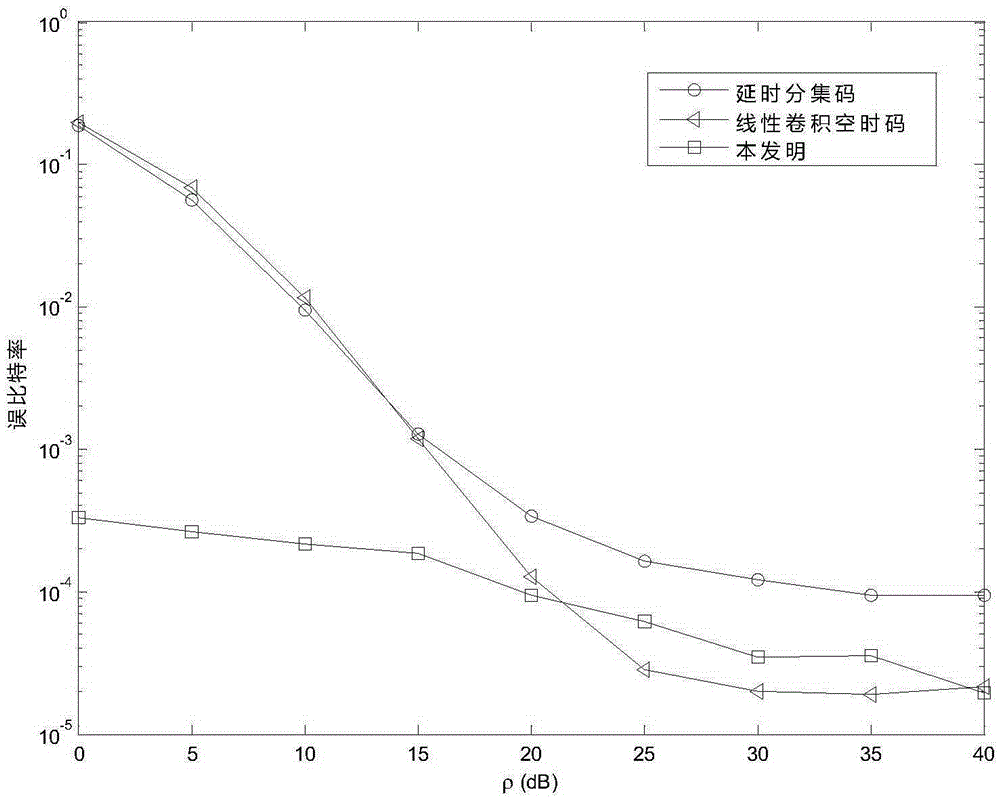Space-time self-coding method for full-duplex two-way relay network
A two-way relay and full-duplex technology, applied in the field of communication, can solve the problems of reducing the performance of the full-duplex system and the reduction of spectrum efficiency, so as to improve the performance of interruption probability, overcome the low spectrum efficiency, and improve the communication capacity and overall performance. Effect
- Summary
- Abstract
- Description
- Claims
- Application Information
AI Technical Summary
Problems solved by technology
Method used
Image
Examples
Embodiment Construction
[0050] The present invention will be further described below in conjunction with the accompanying drawings.
[0051] refer to figure 1 , the method of the present invention is in figure 1 realized in the scenario. exist figure 1 Among them, T1 represents the terminal node, R represents the relay node, and T2 represents the terminal node. h 11 Indicates the loop channel parameter of terminal node T1, h 1R Indicates the channel parameters from the terminal node T1 to the relay node, h 12 Indicates the channel parameters from terminal node T1 to terminal node T2, h RR Indicates the loop channel parameter of the relay node, h R1 Indicates the channel parameters from the relay node to the terminal node T1, h R2 Indicates the channel parameters from the terminal node T2 to the relay node, h 22 Indicates the loop channel parameter of terminal node T2, h 2R Indicates the channel parameters from the terminal node T2 to the relay node, h 21 Indicates the channel parameters from...
PUM
 Login to View More
Login to View More Abstract
Description
Claims
Application Information
 Login to View More
Login to View More - R&D Engineer
- R&D Manager
- IP Professional
- Industry Leading Data Capabilities
- Powerful AI technology
- Patent DNA Extraction
Browse by: Latest US Patents, China's latest patents, Technical Efficacy Thesaurus, Application Domain, Technology Topic, Popular Technical Reports.
© 2024 PatSnap. All rights reserved.Legal|Privacy policy|Modern Slavery Act Transparency Statement|Sitemap|About US| Contact US: help@patsnap.com










